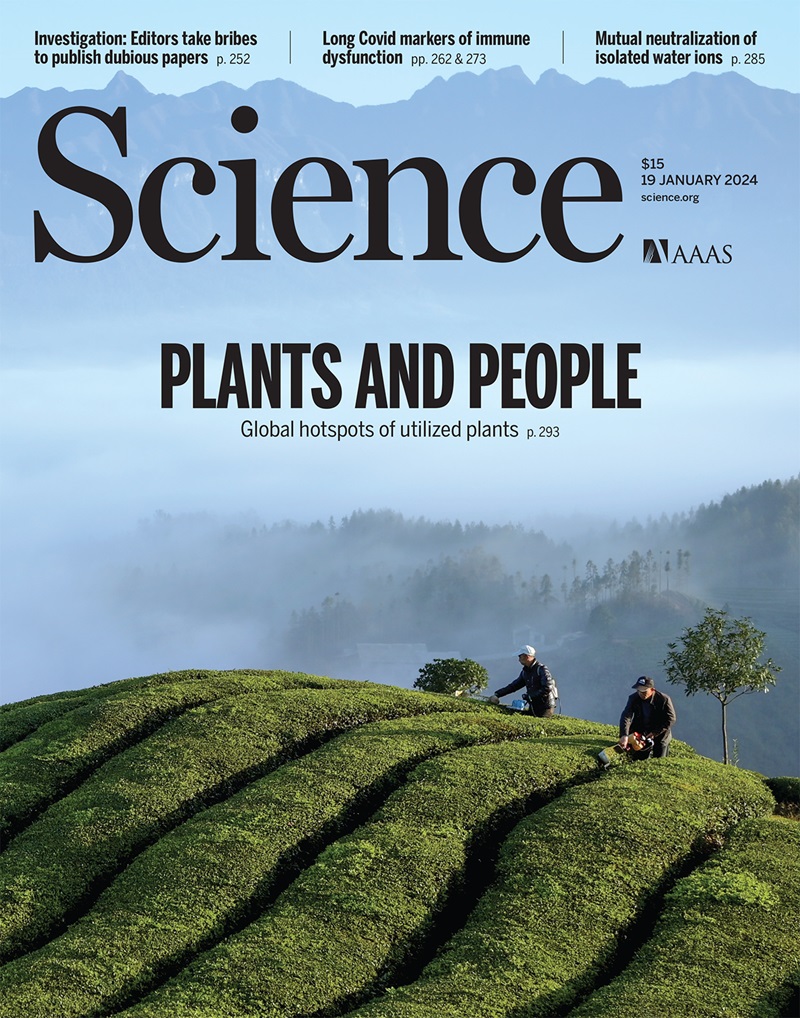Palladium-catalyzed cross-coupling of alcohols with olefins by positional tuning of a counteranion
IF 44.7
1区 综合性期刊
Q1 MULTIDISCIPLINARY SCIENCES
引用次数: 0
Abstract
Transition metal–catalyzed cross-couplings have great potential to furnish complex ethers; however, challenges in the C(sp3)–O functionalization step have precluded general methods. Here, we describe computationally guided transition metal–ligand design that positions a hydrogen-bond acceptor anion at the reactive site to promote functionalization. A general cross-coupling of primary, secondary, and tertiary aliphatic alcohols with terminal olefins to furnish >130 ethers is achieved. The mild conditions tolerate functionality that is prone to substitution, elimination, and epimerization and achieve site selectivity in polyol settings. Mechanistic studies support the hypothesis that the ligand’s geometry and electronics direct positioning of the phosphate anion at the π-allyl-palladium terminus, facilitating the phosphate’s hydrogen-bond acceptor role toward the alcohol. Ligand-directed counteranion positioning in cationic transition metal catalysis has the potential to be a general strategy for promoting challenging bimolecular reactivity.
通过反阴离子的位置调节,钯催化醇与烯烃的交叉偶联。
过渡金属催化的交叉偶联反应在生成复杂的醚类化合物方面具有巨大潜力;然而,C(sp3)-O 功能化步骤所面临的挑战排除了通用方法。在这里,我们介绍了计算指导下的过渡金属配体设计,该设计将氢键受体阴离子置于反应位点以促进官能化。我们实现了伯、仲、叔脂肪醇与末端烯烃的一般交叉偶联,生成大于 130 个醚。温和的条件可以容忍容易发生取代、消除和表聚合反应的官能度,并在多元醇中实现位点选择性。机理研究支持这样的假设,即配体的几何形状和电子元件将磷酸阴离子直接定位在π-烯丙基钯末端,从而促进了磷酸对醇的氢键接受作用。在阳离子过渡金属催化中,配体引导的反阴离子定位有可能成为促进具有挑战性的双分子反应的通用策略。
本文章由计算机程序翻译,如有差异,请以英文原文为准。
求助全文
约1分钟内获得全文
求助全文
来源期刊

Science
综合性期刊-综合性期刊
CiteScore
61.10
自引率
0.90%
发文量
0
审稿时长
2.1 months
期刊介绍:
Science is a leading outlet for scientific news, commentary, and cutting-edge research. Through its print and online incarnations, Science reaches an estimated worldwide readership of more than one million. Science’s authorship is global too, and its articles consistently rank among the world's most cited research.
Science serves as a forum for discussion of important issues related to the advancement of science by publishing material on which a consensus has been reached as well as including the presentation of minority or conflicting points of view. Accordingly, all articles published in Science—including editorials, news and comment, and book reviews—are signed and reflect the individual views of the authors and not official points of view adopted by AAAS or the institutions with which the authors are affiliated.
Science seeks to publish those papers that are most influential in their fields or across fields and that will significantly advance scientific understanding. Selected papers should present novel and broadly important data, syntheses, or concepts. They should merit recognition by the wider scientific community and general public provided by publication in Science, beyond that provided by specialty journals. Science welcomes submissions from all fields of science and from any source. The editors are committed to the prompt evaluation and publication of submitted papers while upholding high standards that support reproducibility of published research. Science is published weekly; selected papers are published online ahead of print.
 求助内容:
求助内容: 应助结果提醒方式:
应助结果提醒方式:


